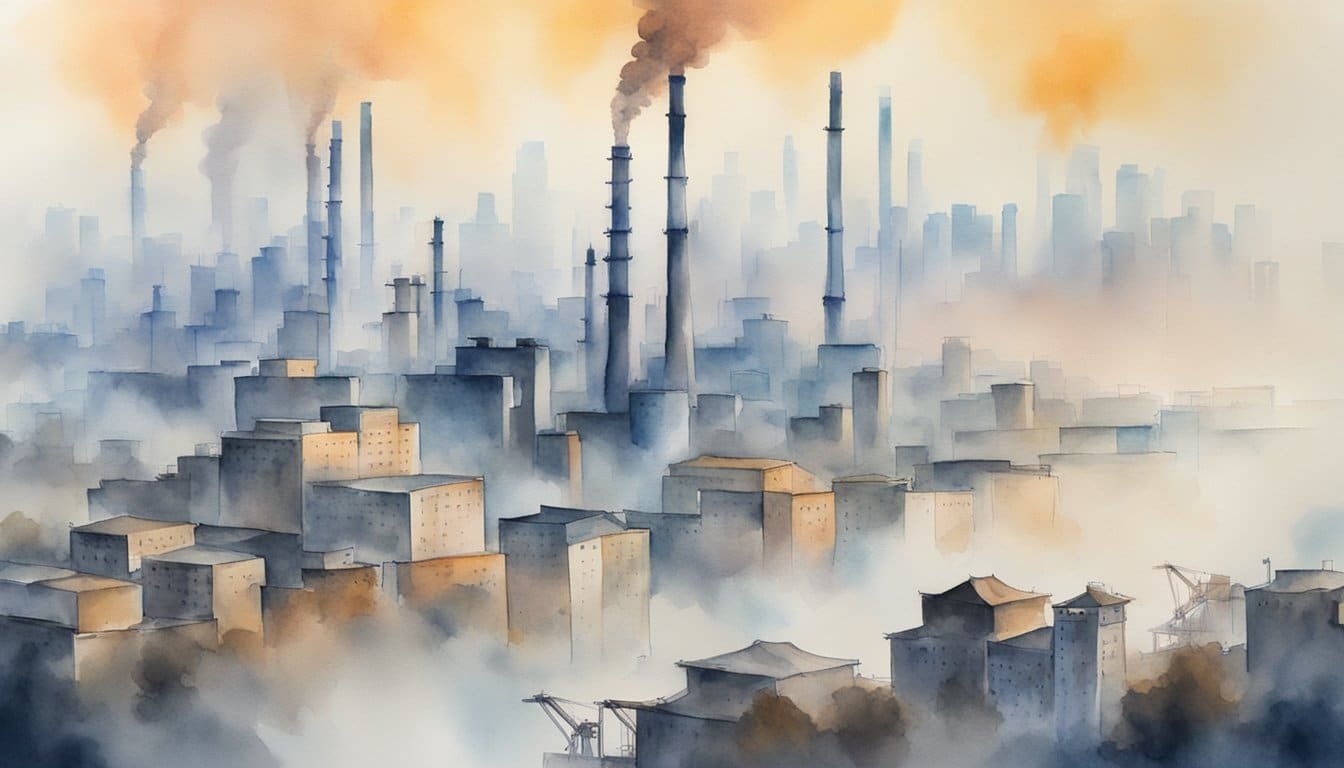Overview of Global Air Quality

Air quality varies widely across the globe, influenced by various factors and resulting in significant disparities. In some countries, residents breathe cleaner air, while others face substantial pollution challenges.
What Determines Air Quality?
Air quality is determined by the concentration of pollutants in the air, critical among these being particulate matter (PM2.5), ozone (O3), and others that pose health risks. The World Health Organization (WHO), alongside environmental agencies like the EPA, provides guidelines and tools such as the Air Quality Index (AQI) to measure these pollutants. External factors including industrial activities, vehicle emissions, and natural phenomena contribute to air pollution levels, while geographical and meteorological conditions can exacerbate or mitigate these effects.
Worst Air Quality by Country
As of 2023, countries with larger populations and significant industrial activities often have higher levels of air pollution. Research highlights that certain lower-income regions struggle with air quality monitoring, which is crucial for mitigating health impacts. Despite improvements in some areas of the world, air quality remains a critical challenge in many countries.
- PM2.5 Levels: Countries like Indonesia often experience high PM2.5 levels due to factors like forest fires and urban pollution.
- Air Quality Monitoring: Regions with less economic resources struggle with insufficient air monitoring, impacting their ability to respond to air quality issues.
- Health Impact: According to the WHO, air pollution poses one of the greatest environmental risks to health, especially in urban settings where population density is high.
Health Impacts of Poor Air Quality
Air pollution is not just an outdoor inconvenience—it can severely impact one’s health. From irritating short-term effects to more dire long-term consequences, the quality of air we breathe is a critical health concern.
Short-Term Health Effects
When air quality plummets, the immediate health effects can be discomforting and dangerous. Individuals may experience a range of symptoms including chest tightness, coughing, throat irritation, and shortness of breath. These issues are particularly pronounced amongst those with asthma, as pollutants can trigger severe asthma attacks leading to emergency healthcare situations.
Long-Term Health Risks
Over the years, long-term exposure to poor air quality can result in more severe health conditions. Studies suggest that living in areas with high levels of air pollution increases the risk of diseases like chronic obstructive pulmonary disease (COPD), lung cancer, and might contribute to cardiovascular diseases. Moreover, persistent exposure is worryingly associated with a shortened life span and may be a factor in premature deaths worldwide.
Sensitive Groups and Air Quality
Certain groups are more susceptible to the effects of polluted air than others. Children, the elderly, and those with preexisting health conditions, such as heart and lung diseases, fall into the category often termed as sensitive groups. For these individuals, even levels of air pollution that might be considered moderate can be unhealthy, leading to a higher likelihood of hospital visits and health complications.
Case Studies of Major Cities

Exploring the air quality in major cities across the globe can provide insight into the environmental challenges and health implications faced by urban populations. Specific cities in Asia are notorious for their hazardous air, while major western cities also grapple with pollution, albeit to a varying degree.
Asian Cities with Hazardous Air Quality
In Asia, the struggle with air pollution is acute in many urban centers. Delhi, for instance, often tops the list for having alarmingly high levels of PM2.5 particles. The capital of India, it has faced public health emergencies due to the pervasive smog especially during the winter months. Air quality in Delhi is frequently categorized as ‘hazardous’ by global standards.
Dhaka, the bustling capital of Bangladesh, confronts similar challenges. It’s not uncommon for the city’s air quality index (AQI) to rise to concerning levels, posing risks to its residents. Karachi in Pakistan and Kolkata in India also experience severe air pollution, affecting millions of lives and contributing to various health issues.
Ulaanbaatar in Mongolia faces extreme air pollution, primarily during the cold winter months when the burning of coal becomes a necessity for survival. This city has recorded some of the highest particulate matter readings in the world. Similarly, Kathmandu in Nepal sees its pollution levels spike, exacerbated by the city’s geography which traps air pollutants.
Air Quality in Major Western Cities
While air pollution is a global issue, major western cities often benefit from advanced air quality control measures. Nevertheless, issues persist. For example, cities like Cairo—though not in the geographical West—face air quality issues resulting from dense populations and a significant number of vehicles on the roads, illustrating that western influence does not immunize cities from environmental challenges.
Efforts to mitigate pollution have seen various degrees of success in major western cities. The introduction of initiatives such as reformulated gasolines and stringent emissions regulations have led to improvements in air quality. For example, Mexico City, once notorious for its smog, has been the focus of case studies that look into the efficacy of air quality improvement measures. Improving air quality in Mexico City has been a multifaceted approach combining policy change and public awareness.
While this section only scratches the surface, it’s clear that the battle for cleaner air is being waged on many fronts, with cities across the globe engaging in strategies tailored to their unique challenges.

